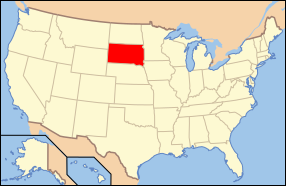A program in two South Dakota counties to help juvenile offenders stay out of detention is poised to expand statewide. South Dakota’s two-year-old Juvenile Detention Alternatives Initiative (JDAI) provides substitutes for detention. Rather than being locked up for offenders who qualify can opt for such measures as daily reporting or electronic monitoring.
Since JDAI was introduced in them, Pennington and Minehaha counties have enjoyed reductions in the average number of youngsters in their county detention centers by more than half.
Recently the state court system accepted a $100,000 grant from the Annie E. Casey Foundation to fund a statewide program coordinator, and the agency intends to ask legislators to make the position permanent. Gov. Dennis Daugaard’s administration and the state court system support the shift in thinking on juvenile justice, and expansion of JDAI statewide.
We support the concept of detention alternatives, and we’ve cooperated with the transition, knowing this would be going statewide.
Officials say the program’s goals of trimming the number of youths in lockup and reducing incidents of juvenile crime through the use of less-restrictive alternatives is a model that can be valuable throughout the state.
South Dakota state court administrator Greg Sattizahn said:
We’re going to use this grant to take it statewide, because the successes in Minnehaha and Pennington counties have been significant.
The shift toward alternatives to juvenile incarceration is particularly significant in light of the state’s history. South Dakota has been re-evaluating its juvenile programs for years, since the death of 14-year-old Gina Score at a Department of Corrections boot camp prompted the creation of a corrections monitor for the state.
Change has not come quickly, however. In 2006, the Casey foundation said that South Dakota locked up youth at a higher rate than any other US state.
The JDAI concept turns on the evidence-based theory that detention can be reduced without increasing juvenile crime. Now that Minnehaha and Pennington counties have seen that happen, prosecutors statewide are more likely to accept the program.
RELATED ARTICLES






















